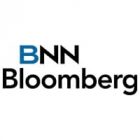Subscribe for Investment Insights.
Cobalt
The price of cobalt has seen two historic spikes in the last decade as supply has struggled to meet demand, driven by electric batteries.
Cobalt is no longer the breakout metal it was in 2017 or 2021, with improved supply and changing electric battery chemistries impacting demand. But that does not mean that investors should count cobalt out just yet.
The Democratic Republic of Congo still dominates 73% of global supply, presenting significant geopolitical and supply chain risks, and soaring electric vehicle sales are expected to offset any efficiencies in electric battery chemistries.
Our latest in-depth analysis on cobalt:
Our industry video on how to invest in cobalt:
Stay ahead of the market with our regular investment insights into cobalt:
The explosion of Artificial Intelligence (AI) is expected to spark a 10-year critical mineral supercycle as the massive energy needs...
Germany 100% dependent on imports for 14 of 27 critical minerals, 95% import dependent on 3 others German strategy to...
deep-sea mining has potential to meet 35-45% of global demand for critical minerals by 2065 Google, BMW, Patagonia, Samsung, Volkswagen...
The US Treasury has announced that any electric battery manufactured in the US that includes components or critical minerals extracted...
The explosion of Artificial Intelligence (AI) is expected to spark a 10-year critical mineral supercycle as the massive energy needs...
Germany 100% dependent on imports for 14 of 27 critical minerals, 95% import dependent on 3 others German strategy to...
deep-sea mining has potential to meet 35-45% of global demand for critical minerals by 2065 Google, BMW, Patagonia, Samsung, Volkswagen...
The US Treasury has announced that any electric battery manufactured in the US that includes components or critical minerals extracted...










